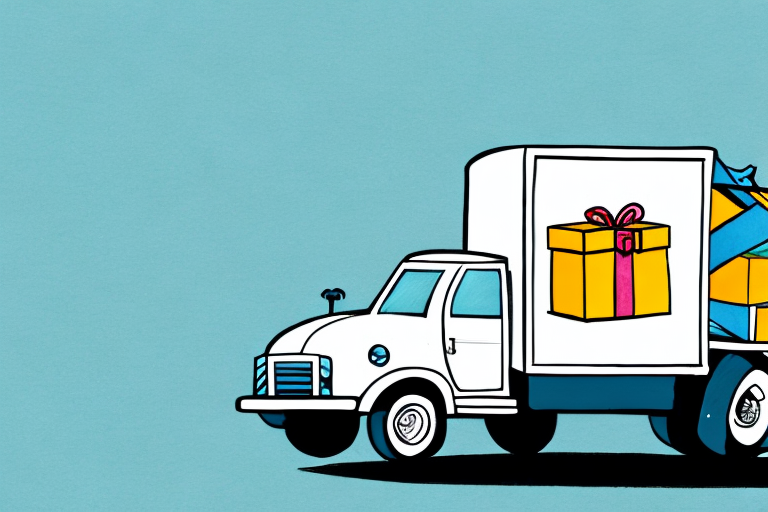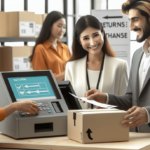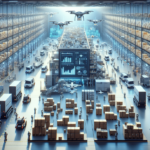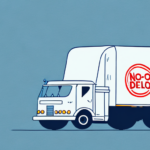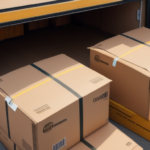Understanding No Contact Delivery: An In-Depth Overview
The COVID-19 pandemic has fundamentally reshaped many aspects of daily life, including the way we receive goods and services. One significant change is the rise of no contact delivery, a method that minimizes physical interaction between customers and delivery personnel. This article explores the mechanisms, benefits, and future of no contact delivery, supported by data and insights from reputable sources.
What is No Contact Delivery?
No contact delivery refers to a delivery method where the exchange of goods occurs without direct interaction between the customer and the delivery person. Instead of handing items directly, delivery personnel leave packages at the customer's doorstep or a designated area, retreating to maintain a safe distance. This method aims to reduce the potential transmission of viruses and maintain public health safety.
During the pandemic, numerous businesses, including restaurants, grocery stores, and retail shops, adopted no contact delivery as a standard practice. Additionally, businesses integrated contactless payment options, enabling transactions to occur online or via mobile applications, further minimizing physical contact.
The Rise of No Contact Delivery
The adoption of no contact delivery surged as the pandemic necessitated new safety protocols. According to a Statista report, the no contact delivery market in the U.S. grew by over 50% in 2021 alone. This growth is attributed to consumer demand for safer delivery options and businesses' need to continue operations amidst restrictions.
Industries such as food service, retail, and logistics embraced no contact delivery to reach customers while adhering to health guidelines. This method not only ensured safety but also demonstrated businesses' adaptability and commitment to customer welfare.
Benefits of No Contact Delivery
Enhanced Safety
The primary benefit of no contact delivery is the significant reduction in the risk of virus transmission. By eliminating face-to-face interactions, the spread of infectious diseases is minimized, protecting both customers and delivery personnel.
Convenience and Flexibility
No contact delivery offers unparalleled convenience, allowing customers to receive their orders at times that suit them without needing to coordinate schedules with delivery drivers. This flexibility is especially beneficial for individuals with busy lifestyles or limited mobility.
Support for Social Distancing
Maintaining social distancing is crucial during pandemics. No contact delivery supports these measures by reducing the need for physical interactions, thus helping to control the spread of diseases.
Environmental Impact
Efficient no contact delivery systems can contribute to a reduced carbon footprint. By optimizing delivery routes and minimizing unnecessary trips, businesses can lower their environmental impact.
How to Request No Contact Delivery
Selecting the Delivery Option
When placing an order online or via phone, customers should look for the no contact delivery option during checkout. If unavailable, contacting the retailer or restaurant directly to request this service is advisable.
Providing Clear Instructions
Customers should specify where the delivery should be left, such as at the doorstep, garage, or a designated area. Clear instructions help ensure a seamless delivery experience without the need for direct interaction.
Utilizing Digital Payments
Opting for online or mobile payment methods reduces the need for cash exchanges, further minimizing contact between customers and delivery personnel.
No Contact Delivery: A Safer Option During the Pandemic
No contact delivery has proven to be a vital service during the pandemic, offering a safe alternative for receiving essential and non-essential goods. According to a Nielsen report, e-commerce sales in the U.S. saw a significant increase in 2020, largely driven by the demand for contactless delivery options.
This delivery method not only supports public health initiatives but also enables businesses to operate efficiently without compromising the safety of their employees or customers.
How Restaurants and Retailers are Adapting to No Contact Delivery
Implementation of New Protocols
Restaurants and retailers have established new packaging and delivery protocols to support no contact delivery. This includes using tamper-evident packaging and ensuring that delivery personnel follow strict hygiene practices.
Integration of Technology
Many businesses have partnered with delivery apps that offer real-time tracking and notifications, enhancing the customer experience. Advanced technologies like drones and autonomous vehicles are also being explored to further reduce human interaction.
Training Employees
Ensuring that delivery personnel are well-trained in no contact delivery procedures is essential. This includes educating them on proper sanitization, safe handling of packages, and effective communication with customers.
Step-by-Step Guide to No Contact Delivery
- Place Your Order: Order online or by phone and select the no contact delivery option at checkout.
- Receive Confirmation: You'll receive a confirmation message or email with an estimated delivery time.
- Delivery Arrival: The delivery person arrives at your designated area and leaves the items without direct interaction.
- Notification: You'll receive a notification once your items have been delivered.
Tips for a Smooth No Contact Delivery Experience
- Ensure your delivery area is accessible and clearly marked.
- Provide detailed delivery instructions to avoid confusion.
- Use reliable contact information for any necessary communications.
- Review your order details to confirm accuracy.
Additionally, consider sanitizing your delivery area before and after receiving your items to maintain hygiene standards.
Challenges of Implementing No Contact Delivery and Solutions
Ensuring Package Security
Without direct interaction, ensuring that packages are left securely can be challenging. Businesses can overcome this by using secure, tamper-proof packaging and implementing advanced tracking systems to monitor deliveries.
Communication Barriers
Miscommunication may occur due to the lack of face-to-face interaction. Utilizing digital communication tools like text messaging and in-app notifications can help bridge this gap, ensuring that customers receive accurate and timely information about their deliveries.
Technology Adoption
Adopting new technologies such as drones or autonomous delivery vehicles requires significant investment and infrastructure. Incremental implementation and partnering with tech firms can facilitate smoother transitions and effective integration.
Comparing Different No Contact Delivery Options
Curbside Pickup
Curbside pickup allows customers to collect their orders without leaving their vehicles. This option is ideal for those who prefer not to leave their cars or have limited mobility.
Self-Service Lockers
Self-service lockers provide a secure location for customers to retrieve their orders at their convenience. This option eliminates the need for direct interaction and ensures package safety.
Drone Deliveries
Drone deliveries represent the cutting edge of no contact delivery, offering rapid and efficient delivery services. While promising, this technology is still expanding and may not be available in all regions.
When choosing a no contact delivery option, consider factors such as availability, convenience, and the nature of the items being delivered to select the most suitable method.
The Future of No Contact Deliveries: Beyond the Pandemic
The success of no contact delivery during the pandemic suggests that it may become a permanent fixture in the delivery landscape. As consumer preferences shift towards convenience and safety, businesses are likely to continue investing in and refining no contact delivery methods.
Advancements in technology, such as artificial intelligence and robotics, will further enhance the efficiency and reliability of no contact delivery systems. Moreover, the environmental benefits associated with optimized delivery routes and reduced emissions are aligning with global sustainability goals, making no contact delivery an attractive long-term strategy.
In conclusion, no contact delivery has proven to be a resilient and adaptable method for goods and services delivery. Its continued evolution will likely shape the future of the delivery industry, offering safer and more efficient options for consumers worldwide.















